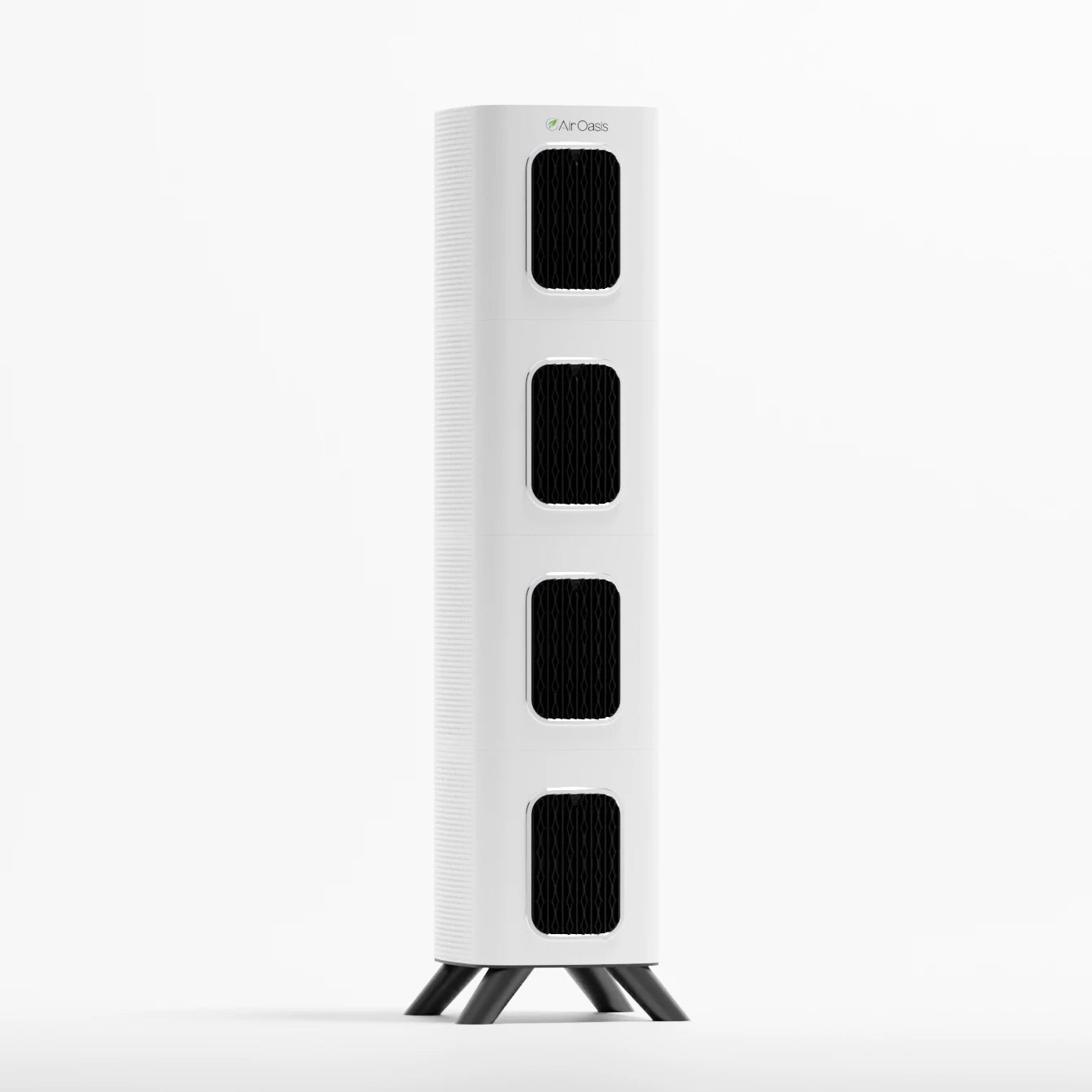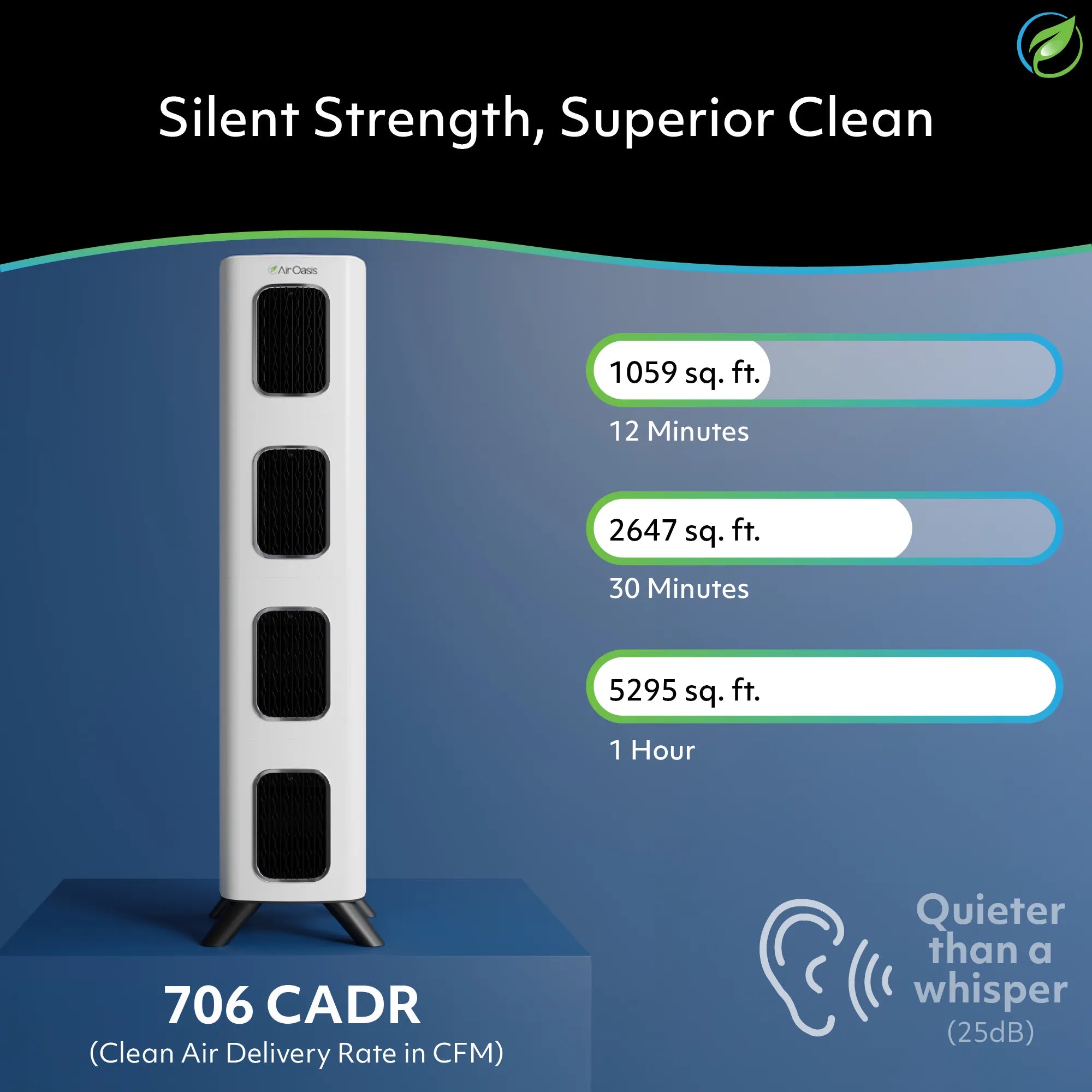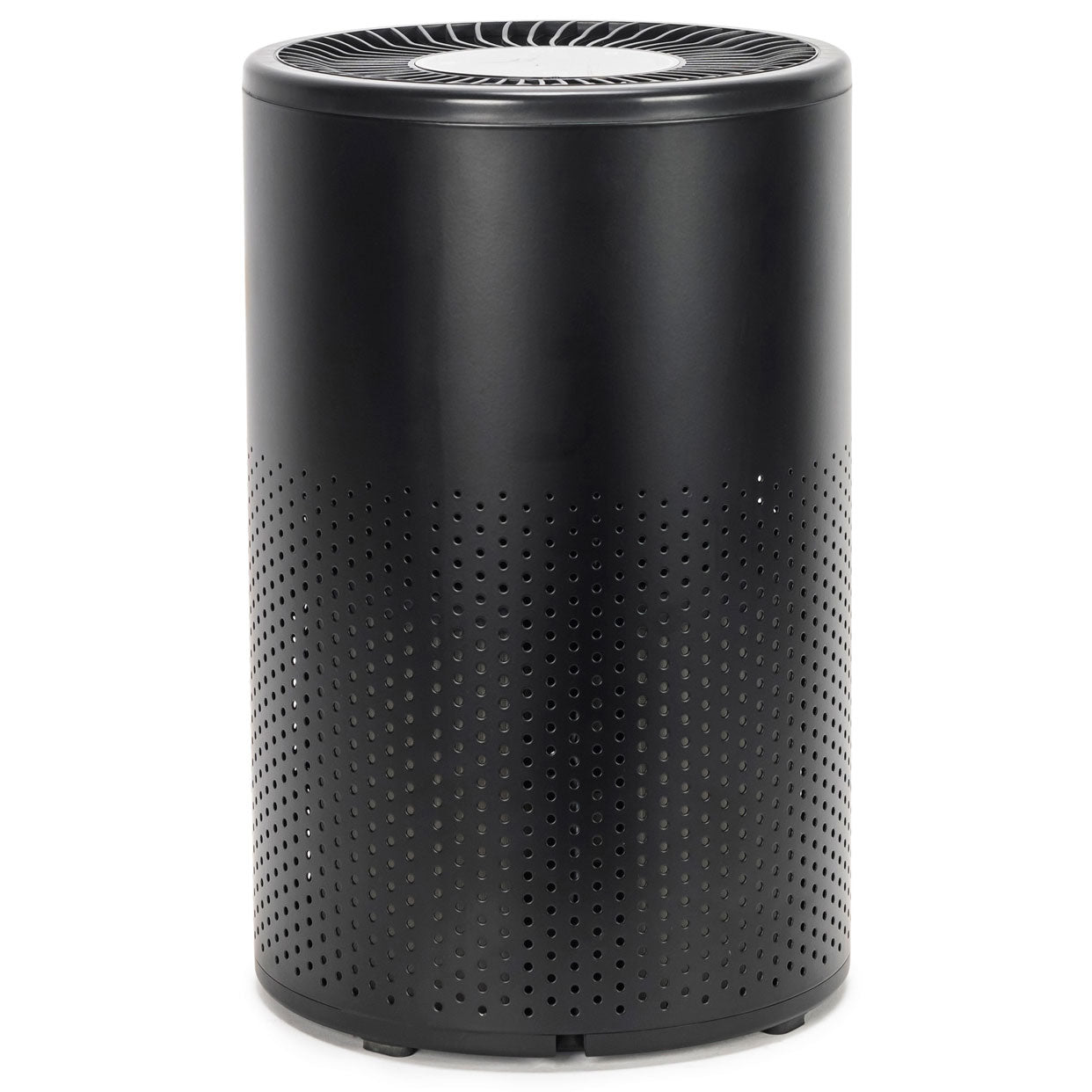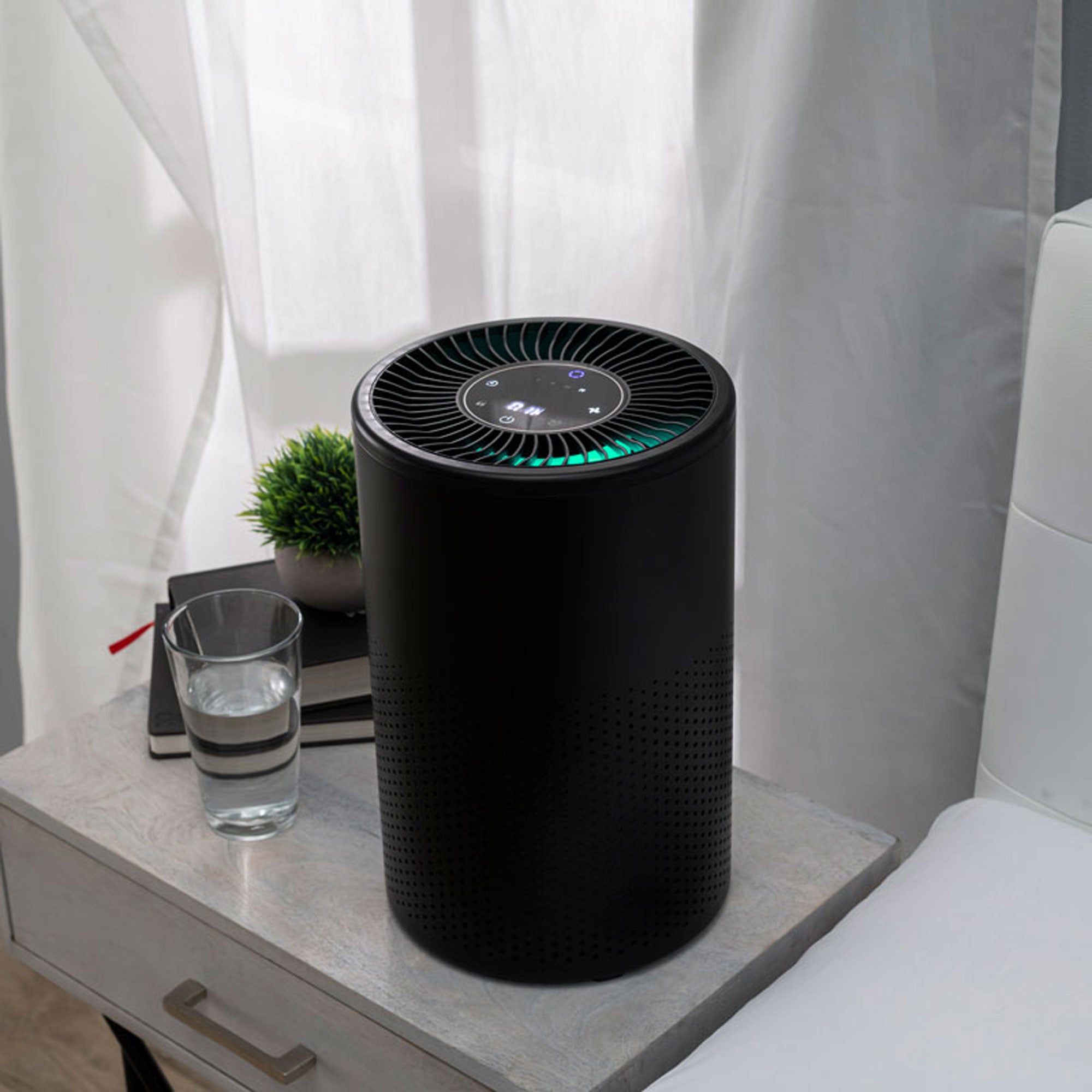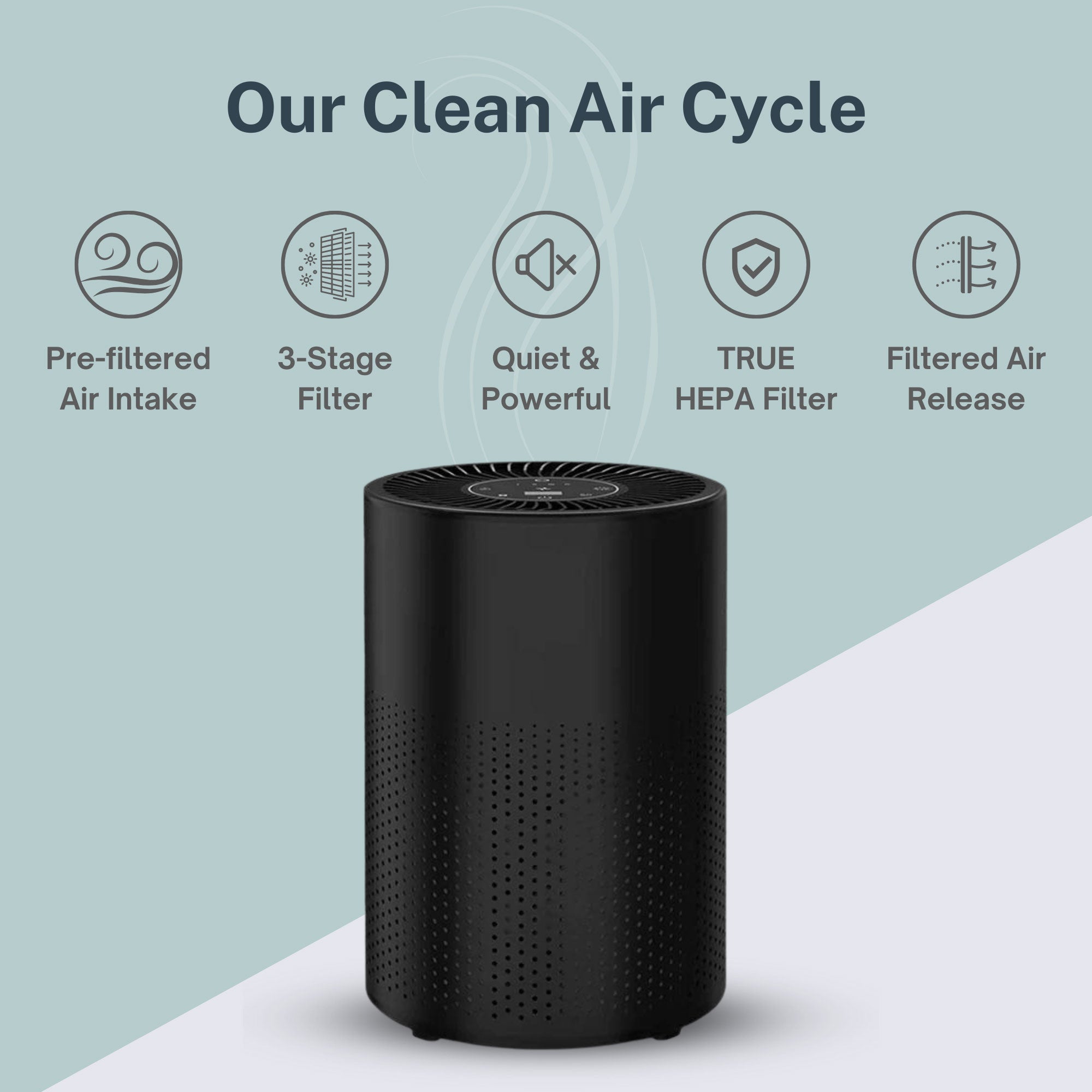It’s officially back-to-school season for children across the country—a time associated with new beginnings and possibilities.
Though the season is filled with excitement, parents may experience mixed emotions, especially when protecting their school-aged children from airborne threats. The Centers for Disease Control and Prevention (CDC) estimates that COVID-19 cases are growing in 25 states as of mid-August.
Air Oasis offers multiple high-quality air purifiers for schools that remove viruses such as COVID-19 from the air, as well as other dangerous pollutants and toxins commonly found in school buildings.
Keep reading to learn about the standards for indoor air quality in schools, as well as ways to improve them.
Worried about back-to-school indoor air quality? Air Oasis can help. Shop our air purifiers online to find the perfect air purifier to fit your needs.
What Causes Indoor Air Pollution in Schools?
When most people think of air pollution, they think of ambient (outdoor) air pollution caused by smokestacks, wildfires, and cars. They don’t realize that indoor levels of air pollutants can be two to five times higher, and occasionally even 100 times higher, than levels of outdoor pollutants.
A lot of indoor air pollution comes from sources that leak gas or particles into the air, such as certain building materials, appliances, air fresheners, as well as live sources like mold, dust mites, and cockroaches.
Before buildings were built to be airtight, pollutants could escape, or outdoor air could enter and dilute them. Today’s energy-efficient buildings effectively seal pollutants inside, where children (and educators) are at all day long.
Why is Indoor Air Quality a Concern for Schools?
Indoor air quality (IAQ) is a concern anywhere, but schools are one of the most important. Let’s find out why.
Children Have Higher Health Risks
Maintaining IAQ in schools is arguably more important than in other public buildings for various reasons, one of which is that American children spend about 1,000 hours in school each year—about 6 hours a day.
Roughly 4.5 million children have asthma—a top source for school absenteeism—which can certainly be triggered by an influx of and increased exposure to polluted indoor air.
While short-term exposure to indoor pollutants can cause sickness, lethargy, allergy-like symptoms and trigger asthma attacks, long-term exposure can increase a student’s risk of developing heart disease, respiratory disease, and cancer.
What’s worse, children are more susceptible to indoor air pollution because their bodies have difficulty processing toxins, and they breathe more, relative to their size, than adults do.
All of these things can negatively impact a student’s health, attendance, and overall performance. We can set kids up for success by providing a clean, comfortable learning environment—an air purifier is one way to help accomplish that.
Negative Consequences for the School
Poor indoor air quality impacts not only the students but also the administrators, educators, parents, and other faculty members and volunteers who walk the halls each day.
Adults can experience similar symptoms from prolonged exposure to air pollutants, such as itchy eyes, runny nose, sore throat, headaches, and fatigue. These symptoms can impact their ability to perform at the highest level—no one does their best work when they don’t feel well.
Poor air quality could cause the school to issue unforeseen closings, relocations, and other disruptions. Air pollutants like mold can deteriorate a building's physical structure, leading to costly remediation and renovations. Plus, low indoor air quality in schools can erode the trust between parents, children, and school staff.
All these things make it of the utmost importance to prioritize indoor air quality in school buildings. Air Oasis has air purifiers for schools with advanced filtration systems, like a medical-grade HEPA filter, carbon filter, silver filter, and bi-polar ionization to trap and clean pollutants from the air. Our iAdaptAir2.0 Pro can even clean the air in a fully occupied school classroom in as little as 12 minutes.
Indoor Air Quality Standards for Schools
The Environmental Protection Agency (EPA) offers guidelines for schools in its Indoor Air Quality Tools for Schools Action Kit. The guidelines suggest that schools do the following to maintain good indoor air quality:
- Provide quality HVAC: Properly functioning HVAC systems can improve ventilation, control odors and reduce pollutants that affect IAQ. EPA guidelines suggest that schools provide a minimum outdoor air ventilation consistent with the American Society of Heating, Refrigerating and Air-Conditioning Engineers (ASHRAE) standards.
- Maintain mold and moisture control: Mold exposure can have negative health effects and result in serious sickness. The EPA suggests that schools conduct routine moisture inspections and maintain indoor humidity levels between 30% and 60%. Schools should also establish a mold prevention and remediation plan.
- Establish a pest management plan: The EPA encourages schools to make an integrated pest management plan that includes monitoring for pests, avoiding broad pesticide application, and communicating transparently with occupants about pesticide usage. Pests can be a big source of allergens, due to the particles they release into the air, so properly preventing an infestation can go a long way to improving air quality in schools.
- Effectively clean and maintain school buildings: Regular cleaning and maintenance can prevent the buildup of allergens, irritants, and bacteria that decrease IAQ. Steps can include using vacuums with high-efficiency HEPA filters, regularly dusting furniture, using mats to stop children from tracking in dirt, and maintaining cleaning supplies and equipment in accordance with the manufacturer’s guidelines.
- Make smart materials selections: One of the most effective ways to improve IAQ is choosing materials and products that have less impact on human health and the environment than equivalent, competing products. Products that reduce the amount of toxins disposed of or consumed are ideal.
- Eliminate individual sources of pollution: Implementing proper chemical use, storage and disposal can greatly reduce chemical exposures and accidents. Identifying potential chemical pollutants such as radon is critical.
Who Makes Guidelines for Indoor Air Quality in Schools?
The EPA creates comprehensive guidelines for maintaining IAQ in schools, and federal agencies such as the Centers for Disease Control and Prevention (CDC) provide guidance as well. However, federal agencies have no way of enforcing these guidelines on a state-by-state basis.
Unfortunately, without a statewide school IAQ policy and an effective program by which to implement policy, IAQ will vary from school to school, widening environmental inequalities. If a school’s indoor air pollution is making your child sick, you will need to appeal to the school using state health laws, citing minimum school facility and inspection requirements.
4 Ways to Improve Indoor Air Quality in Schools
When your child is excited to go back to school, indoor air quality issues can quickly dampen that enthusiasm. Although legal recourse has the potential to be sweepingly effective, it takes time. If parents, teachers, and schools decide they need to improve IAQ quickly, several fast, effective methods exist.
Air Purifiers
High-quality air purifiers for schools are the most effective way to clean indoor air from a variety of pollutants, including volatile organic compounds (VOCs), particulate matter, smoke, allergens, viruses, and bacteria. The commercial-grade iAdaptAir 2.0 leverages the power of the top five air purification technologies to provide clean, healthy air in any space.
Moisture Control
Too much humidity in the air can encourage mold growth, and too little humidity in the air can exacerbate symptoms caused by poor indoor air quality. Using dehumidifiers and humidifiers, based on a classroom’s needs, can be an effective way to improve air quality.
Natural Ventilation
One of the reasons IAQ gets so bad in modern buildings is that pollutants can’t escape, and outdoor air can’t seep in to dilute them. If a classroom or school is able to open windows or doors, or even run a fan that brings outdoor air into the building, they can drastically reduce the concentration of indoor pollutants.
HVAC Upgrades
Upgrading outdated HVAC systems to maximize ventilation, reduce air recirculation and allow for in-classroom thermostat controls can greatly improve IAQ. Replacing air filters with new, more efficient ones can play a large role in preventing the recirculation of various pollutants.
Safeguarding Student Health: Air Oasis Air Purifiers for Schools
Whether you’re concerned about your child’s exposure to COVID-19, chemical toxins, mold and allergens, or other pollutants, one thing is certain: when it’s time to go back to school, indoor air quality is top of mind.
Fortunately, you have many improvement options available to you, starting with Air Oasis air purifiers. Air Oasis offers the highest-quality air purifiers on the market, capable of purifying large and small spaces with stunning efficiency.
Ready to start breathing easier (and safer)? Shop for air purifiers online to find the perfect model for your needs.


































